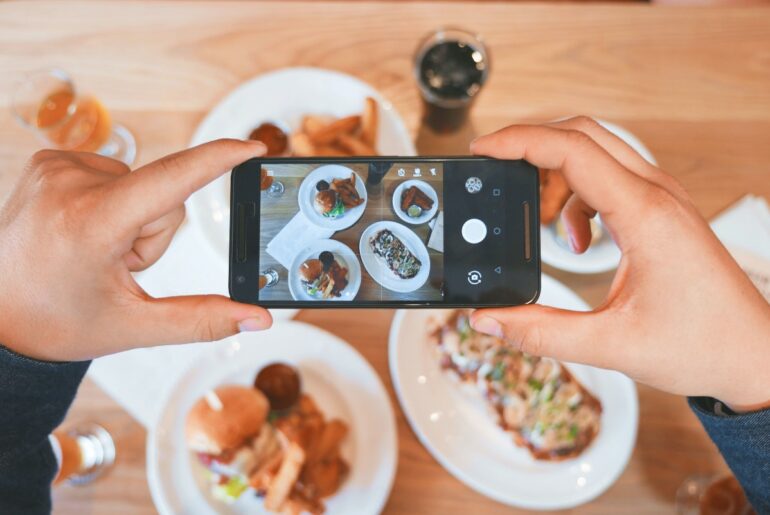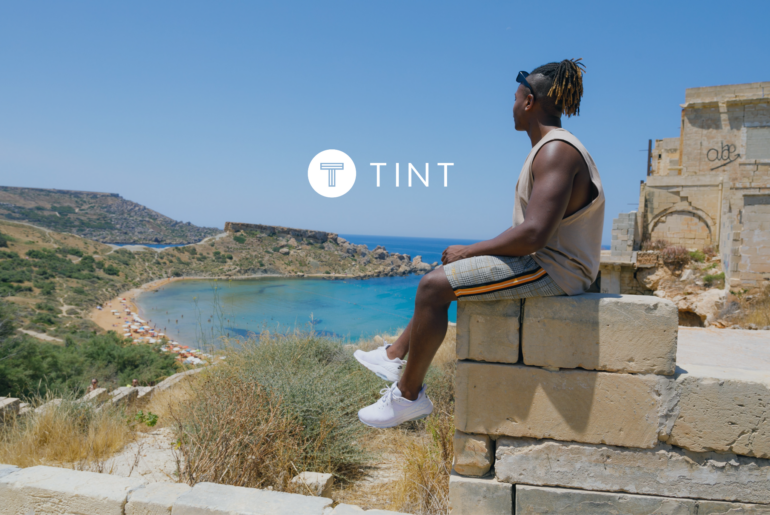Brands and agencies are spending more than ever on influencer marketing. The influencer and content creator industry is booming with people and money. To maximize opportunity, brands and agencies need to focus on how they can build authentic influencer relationships that last beyond the scope of a single promotion.

The glut of money and attention to influencers has led to pains for those using macro-influencers. Kim Kardashian received an FDA warning letter for the improper Instagram endorsement of an anti-nausea medication. Beauty influencers Tati Westbrook and James Charles had a very public fight that pulled focus from brands they were supporting and lead to boycotts of several brands that were tangentially involved.
That said, when brands connect with influencers, amazing things can happen.
As we began to research this topic, a video from a YouTuber that we subscribe to came across our feed. This article was greatly inspired by the video “Working with Brands” posted on the Red Means Recording YouTube Channel. The video is 11 minutes long and absolutely worth the watch.
Who Is Red Means Recording?
Red Means Recording (RMR) is the brainchild of Jeremy Blake Leaird-Koch, a Seattle-based musician, video editor, and content creator. His YouTube channel shows his process as he composes elaborate electronic music using specialty tools like the OP-1 Teenage Engineering Synthesizer. The videos are humorous, self-referential (the cow!), and minimalist to showcase the music composition process.
At 320k subscribers, Jeremy lands on the smaller end of the macro-influencer spectrum. He has a devoted following (us included), but has less reach than major players in the music influencer circles like SuicideSheep who has 1m+ subscribers. However, his niche and quality of content has created opportunities for him to work with over 25 companies.
His video digs into his experience working with brands as his channel has grown. There were some key phrases that need to be unpacked. They allude to the difficulty of content creators to build authentic relationships with businesses after they’ve been burned by dubious operators. This sting has been felt by many influencers and content creators.
(We’ll use Jeremy and RMR interchangeably throughout the piece.)
Some of our favorite language from RMR:
- “They won’t love you the way you want them to.”
- “It can immediately become clear who cares and doesn’t care about influencers.”
- “Companies need you more than you need them.”
- “Brands are sociopathic and selfish.”
These comments prove that as marketers rush into influencer marketing there is any number of faux-pas to be made. Marketers should seek to build authentic influencer relationships rather than focusing on short-term gains. Appropriately, Hootsuite defines influencer marketing as a “form of collaboration.” A brand or agency should collaborate with social content creators to engage their niche audience. These authentic relationships can open the door to sustained expansion, particularly when collaborating with a smaller influencer that is growing organically.
Oh the Influencers that You’ll Meet
Before diving into best practices, we must consider the criteria and motivation of different influencers. There are four basic sizes of influencers. Each type has specific needs, wants, and ideas. To build authentic influencer relationships you should try to understand the types of influencers and strive to connect with them. Once you’ve connected, you should be aware that their needs change as their audience or position grows.
The majority of these core definitions are taken from Hubspot’s Ultimate Guide to Influencer Marketing and augmented with additional information from our TINT social teams.
Mega-Influencers
These influencers are celebrities (or pseudo-celebrities). They have over 1,000,000 followers and are widely known. These deals should be treated as celebrity endorsements and priced as such. Even digital celebrities can come with a hefty price tag. Beauty vlogger and personality Jeffrey Star reportedly charges upwards of $165,000 for a single product review. With over 16.7 million followers, the reach offered by that review is equivalent to any mass media buy.
This sort of influencer is looking to monetize their content and grow their brand. Influencing is their life and they will charge an amount that is commensurate with their audience. They are used to working with brands and agencies. They often have an established process to contract services and should be able to launch quickly.
Macro Influencers
Macro Influencers are “Well-known online presence[s] with 100,000 -1 million followers.” The macro-influencer is incredibly strong in their niche and will also maintain a broad appeal in adjacent demographics. The macro influencers may aspire to mega status, but many are content with their size. They often do not live by their content alone and are often quick to partner with amenable brands. They can occasionally partner with brands that are a bad match as they figure out the right way to market their content.
This sort of influencer is looking to grow and monetize, much like the mega influencer. They can often resonate more soundly in the specific niches they serve. There’s also more variability in pricing.
Smaller macro influencers may be unfamiliar with working with brands or agencies. They can require varying degrees of support depending on their level of experience with sponsored content.
Micro Influencers
“A micro influencer typically has between 1,000-100,000 followers.” These influencers are content experts and many have reached the top of their specialty fields. Some marketers are quick to scoff at micro influencers, but these users that built an online community that is larger than many towns. They likely have deeper connections to their niche.
They have started to learn that free items don’t pay the bills and will begin to seek opportunities to monetize their content. A smart brand will connect with these types of influencers and work hard to ensure that they have a positive experience. All of the nano and mega influencers had to move through this stage before they “broke through”. Connect early and build along with micro influencers.
This type of influencer is looking to align their content with brands that make sense, but sometimes they are looking for easy money, free food, or special access. This is why you’ll occasionally find things like mattress advertisements on True Crime podcasts or vitamin supplements on mukbang videos. Build authentic influencer relationships with the micros and it will pay off in the end.
Nano Influencers
Nano influencers are all around us! They can be tastemakers, community experts, and social butterflies. It is likely that you will be the first brand that approaches a nano influencer. There is also a high possibility that a nano influencer had not considered that their content was worthy of sponsorship or any sort of commercial syndication. Many of these influencers are happy to trade access for praise and free product. But once they’re bitten by the fame bug, they can grow quickly into one of the later phases of influencer. You should seek to build authentic influencer relationships with them early and never take steps that could be perceived as taking advantage of the little person.
Who owns the relationship?
In their Ultimate Guide to Influencer Marketing Hubspot clearly identifies Influencer marketing as an affiliate program and we’re inclined to agree. Neil Patel defines affiliate marketing as the process of spreading product creation and product marketing across different parties, where each party receives a share of the revenue according to their contribution. Perhaps Allie Decker at Hubspot says it best, “[It] taps into word-of-mouth marketing and social proof, two of the strongest influencers (literally) of shopping behavior and brand trust.”
A complaint made by RMR is that the initial outreach is made by an intern or junior staffer. After establishing contact, the influencer is passed around until landing on someone with purchase authorization. This is not an ideal scenario. The process should be smooth. You are trying to build authentic influencer relationships, not just fulfill a transaction. Someone who supports the relationship along the entire way. This should be someone that drives affiliate or channel partner marketing efforts.
It can be tempting to assign part of the process to Communications professionals, but Influencer engagement is a marketing function. According to the Mediakix Influencer Marketing Survey, 48% of marketers say that ROI from influencers is better than other marketing channels. Influencer marketing, when well executed, can exceed quality and reach when compared against spend for other top-of-funnel channels like Adwords. Given the strength of influencers with specific vertices, it makes sense that 65% of respondents in the Mediakix survey say that they will increase spending on Influencers.
Best Practices
Transparency is key.
Let them know what your goals are and how this partnership will help support their own. Influencers recognize that brands are taking chances when they engage with content creators, particularly if they’re choosing smaller channels/creators over the macro-influencers. Collaboration is key.
Also, let them know who else you’re working with. It has become standard practice to have “launch day media carpet-bombing” (RMR), but it is distressing to have a company reach out and make an agreement with an influencer, then the influencers finds out they’re one of dozens of other creators making content at the same time around the same subject for the same company.
Pick a relevant Influencer.
Know who you are trying to reach and select an influencer that is appropriate. Product and Creator match drives synergy. Just because someone is extremely popular or has a huge following does not mean that they’ll drive marketing efforts. A smaller creator with a devoted audience is worth more than a mega-influencer that doesn’t align with your brand.
Understand what you’re asking for and be clear about expected outcomes.
There are a variety of influencers out there. Depending on the channel, platform, and type there are variable outcomes. Consider Youtube music creators. Some creators will demonstrate tools and software. Others will provide a specific review. It can come off as insincere or ignorant to ask an influencer to majorly deviate from their standard format just better suit your marketing efforts.
In the video from RMR, Jeremy says that he felt like his content was not ideal for some brands. He doesn’t talk about the gear, he just uses it to produce music. On the contrary, this is perhaps the purest form of influencer marketing. Younger Millennials, Gen Z, and Gen Alpha are increasingly unresponsive to traditional marketing. But seeing a tool or product in the hands of an influencer that they trust is the greatest endorsement. Younger generations are not swayed by the celebrity on the Wheaties box nor are they particularly susceptible to the wiles of the [pseudo]celebrity-macro influencer. They are influenced by content creators that look, act, or believe like them. They seek authenticity in marketing and this sort of content is absolutely authentic.
Be clear on the amount of content you’re expecting to be produced, how you’re hoping your product is portrayed, and the ultimate goal of the influencer endorsement.
Be clear about compensation.
There is not a standardized fee schedule for influencers. The payouts can vary by product, industry, reach, and a variety of other efforts. But compensation should be something discussed early and standardized for each marketing activation. Be clear about whether you are trading thanks, product, services, access, or monetary compensation.
Bigcommerce identifies three standard ways that affiliates get paid:
- Pay per sale – A standard affiliate practice, particularly among influencers, usually administered through a coupon code or custom landing page.
- Pay per lead – A tactic deployed for big ticket items or technical services. The lead is generated through information capture by the influencer or redirection to a form or website.
- Pay per click – A tactic focused on driving traffic to an assigned website. This is administered through customized landing pages or tracking tools like UTM codes.
Never ask an influencer to lie, they should always disclose.
An influencer may not like your product or service. Just because you are engaged with this creator does not mean they are obliged to post an untrue opinion. Not only is it ethically wrong, the Federal Trade Commission has taken a hard stance on it too. In their Disclosures 101 for Social Media Influencers, they say that it is unlawful to have reviewers share false reviews of products or services.
Any sponsored content or advertisement should be clearly marked in accordance with FTC guidelines.
Need a recap of FTC guidelines? We have a blog with 6 takeaways from their documentation.
_________________
Micro and Nano Influencers are quickly becoming one of the most effective ways to engage with audiences. Regardless of platform, smaller influencers drive conversion and are easily accessible with the right tools. Chat with one of our UGC experts to discover how TINT can help you identify, support, and build authentic influencer relationships.



